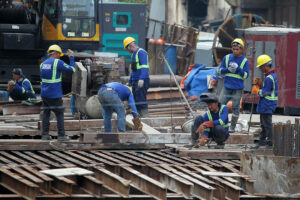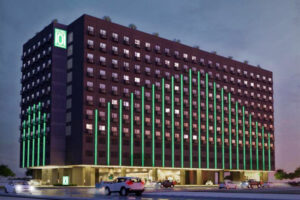By Abigail Marie P. Yraola, Researcher
PRICE GROWTH of construction materials in Metro Manila eased at both the wholesale and retail levels in June, the Philippine Statistics Authority (PSA) reported on Friday.
“Base effects, moderating commodity prices, and slowing demand likely translated to the slower expansion,” ING Bank N.V. Manila Senior Economist Nicholas Antonio T. Mapa said in an e-mail.
For Oikonomia Advisory & Research, Inc. President and Chief Economist John Paolo R. Rivera, the slowdown in bulk building materials can be attributed to slower construction activities as interest rates remain relatively higher.
Meanwhile, for retail building materials, the slowdown is driven by the persistence of relatively elevated prices of construction materials, but not as high as before, he said in an e-mail.
“The cost of borrowing may be too high for construction companies that compels them to slow down construction activities,” Mr. Rivera added.
Preliminary data from the PSA showed that the Construction Materials Wholesale Price Index (CMWPI) in the National Capital Region (NCR) saw a slowdown, recording a year-on-year growth rate of 5.9% in June. This was the slowest growth in 16 months since the reading of 5.2% in February 2022.
The latest data showed a decrease compared to the 6.5% growth logged in May and the 8.9% growth recorded a year earlier. June marked the eighth consecutive month of declining growth rates.
In the first half of the year, the CMWPI averaged 7.6%, higher than the pace of 6.9% recorded in the same period last year.
The PSA attributed the slower growth to heavily weighted items such as reinforcing and structural steel, where price growth decelerated to 2.6% from 4.1% in May, as well as to sand and gravel (4.1% from 4.7%).
Slower price growth was also observed in painting works (11.2% from 12.4%); lumber (5.1% from 6.2%); sand and gravel (4.1% from 4.7%); plumbing fixtures and accessories or waterworks (3.6% from 4.2%); tile works (1% from 1.4%); electrical works (5.9% from 6.3%); doors, jambs, and steel casements (4.9% from 5.2%); concrete products and cement (8.9% from 9.1%); and plywood (4.2% from 4.3%).
On the other hand, price growth accelerated in hardware, reaching 6.2% from 6% in May, and in G.I. sheets, increasing to 14.8% from 13.8%.
Meanwhile, commodity groups for glass and glass products, asphalt, and machinery and equipment rental remained unchanged.
In a separate announcement, the statistics agency reported that retail price growth in construction materials in Metro Manila eased in June.
The Construction Materials Retail Price Index (CMRPI) in the NCR recorded a year-on-year growth of 1.9% in June, compared to 2.6% in May and 6.8% in the corresponding month of the previous year.
The June reading marked the lowest growth in 22 months, since the 1.5% recorded in August 2021.
“The downtrend of the CMRPI during the month was primarily caused by the annual decline in the miscellaneous construction materials at 1.6% from 0.3% annual increment in the previous month,” the PSA said.
The continued deceleration was also attributed to various factors, including tinsmithry materials (3.9% from 4.5%); carpentry materials (2.1% from 2.6%); electrical materials (1.2% from 2%); painting materials and related compounds (4.2% from 4.8%); plumbing materials (0.3% from 0.7%); and masonry materials (1.6% from 2%).
From January to June, the CMRPI averaged 3.7%, which was slower than the 5% recorded during the same period a year ago.
According to Mr. Rivera, the movement of price growth for building materials in the coming months will depend on the direction of inflation, interest rates, and the exchange rate.
Meanwhile for Mr. Mapa, “We can expect prices to moderate further in the coming months as demand for construction activities may slow due to rising borrowing costs.”
Headline inflation in June slowed to 5.4% from 6.1% in May, the slowest in 14 months or since the 4.9% in April 2022. The June inflation print was the first-time inflation fell below 6% since the 5.4% print in May 2022.






